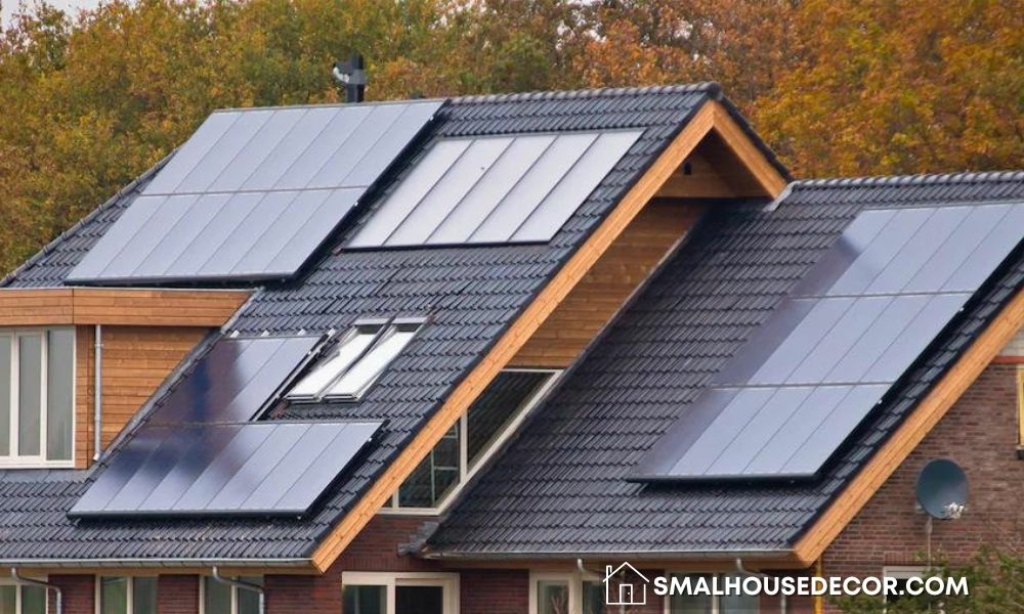In a world where architectural innovation is continually rising, understanding residential roofing systems becomes crucial. Professionals such as Tidd’s Roofing symbolize the modern approach to roofing. This article delves into various modern roofing types, materials, and technologies, offering a comprehensive overview.

Modern Roofing Types: Diversity and Efficiency
Flat Roofs
Flat roofs present a clean and modern appearance. These roofs are known for their space efficiency and affordability. Often constructed using materials like bitumen or rubber membrane, they offer flexibility in design.
Pitched Roofs
Offering a more traditional aesthetic, pitched roofs can be found in various materials and styles. They are known for their durability and ability to withstand harsh weather conditions.
Materials Utilized in Modern Roofing
Metal Roofing
Metal is a popular choice due to its energy efficiency and longevity. With a range of colors and finishes, it provides a sleek appearance resistant to various environmental factors.
Solar Tiles
Embracing sustainability, solar tiles generate energy while serving as a functional roof. Though the initial investment can be significant, long-term energy savings are appealing.
Green Roofs
Green roofing systems incorporate vegetation into the roofing structure. They provide insulation, reduce water runoff, and offer aesthetic beauty.
Innovative Technologies in Residential Roofing
Cool Roofing
Using reflective materials to deflect sunlight, cool roofing systems reduce heat absorption. These roofs minimize energy consumption, particularly in hot climates.
Synthetic Roofing
Utilizing man-made materials, synthetic roofing mimics the appearance of traditional materials like slate or wood. This option offers durability without sacrificing visual appeal.
Also Read: Things to Think About Before Hiring Roofers
Advantages and Considerations of Modern Roofing Systems
Sustainability and Efficiency
Contemporary roofing systems prioritize sustainability and energy efficiency. Innovations like solar tiles and green roofs align with global efforts to reduce environmental impact.
Aesthetic Versatility
Modern roofing offers a plethora of design options. Whether seeking a sleek, contemporary look or a traditional appearance, there are options to suit every taste.
Cost Factors
Though modern roofing offers many benefits, it is essential to consider the initial investment and ongoing maintenance. High-end materials may require substantial upfront costs, but they may save money in the long run due to their durability and efficiency.
Future Prospects: Embracing New Horizons
The future of residential roofing systems is poised for significant transformation. Advancements in technology, coupled with a growing emphasis on sustainability, will pave the way for more efficient and environmentally friendly options. Research and development into new materials, such as recyclable composites and energy-generating coatings, will redefine the scope of what’s possible.
As the world continues to adapt to climate change and shifts in energy consumption, the roofing industry will likely align itself with these broader societal goals. This alignment will shape the future of residential roofing, offering innovative solutions that blend form, function, and ethical responsibility.
A Modern Approach to Roofing
In the context of modern residential roofing, professionals such as Tidd’s Roofing represent a blend of innovation and traditional craftsmanship. Without affiliating with any particular brand, this approach embodies the essential characteristics of contemporary roofing, from materials to design considerations.
Conclusion
Modern residential roofing systems offer a rich blend of functionality, aesthetic appeal, and sustainability. The continued evolution of materials and technologies will undoubtedly lead to further advancements, setting new standards for efficiency and design.
Homeowners seeking a blend of tradition and innovation may find an ideal balance in the current roofing landscape, characterized by diversity and a commitment to environmental stewardship.